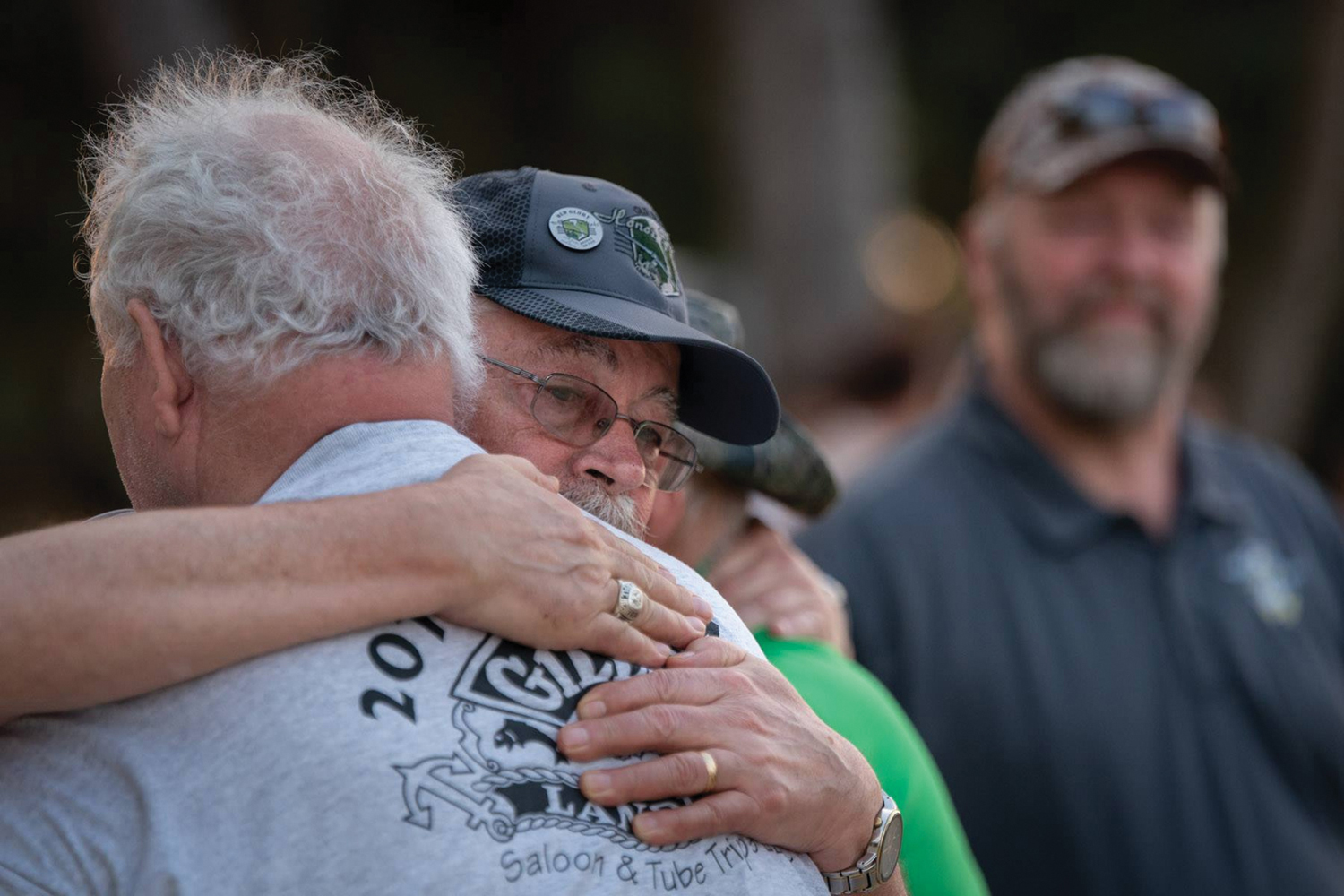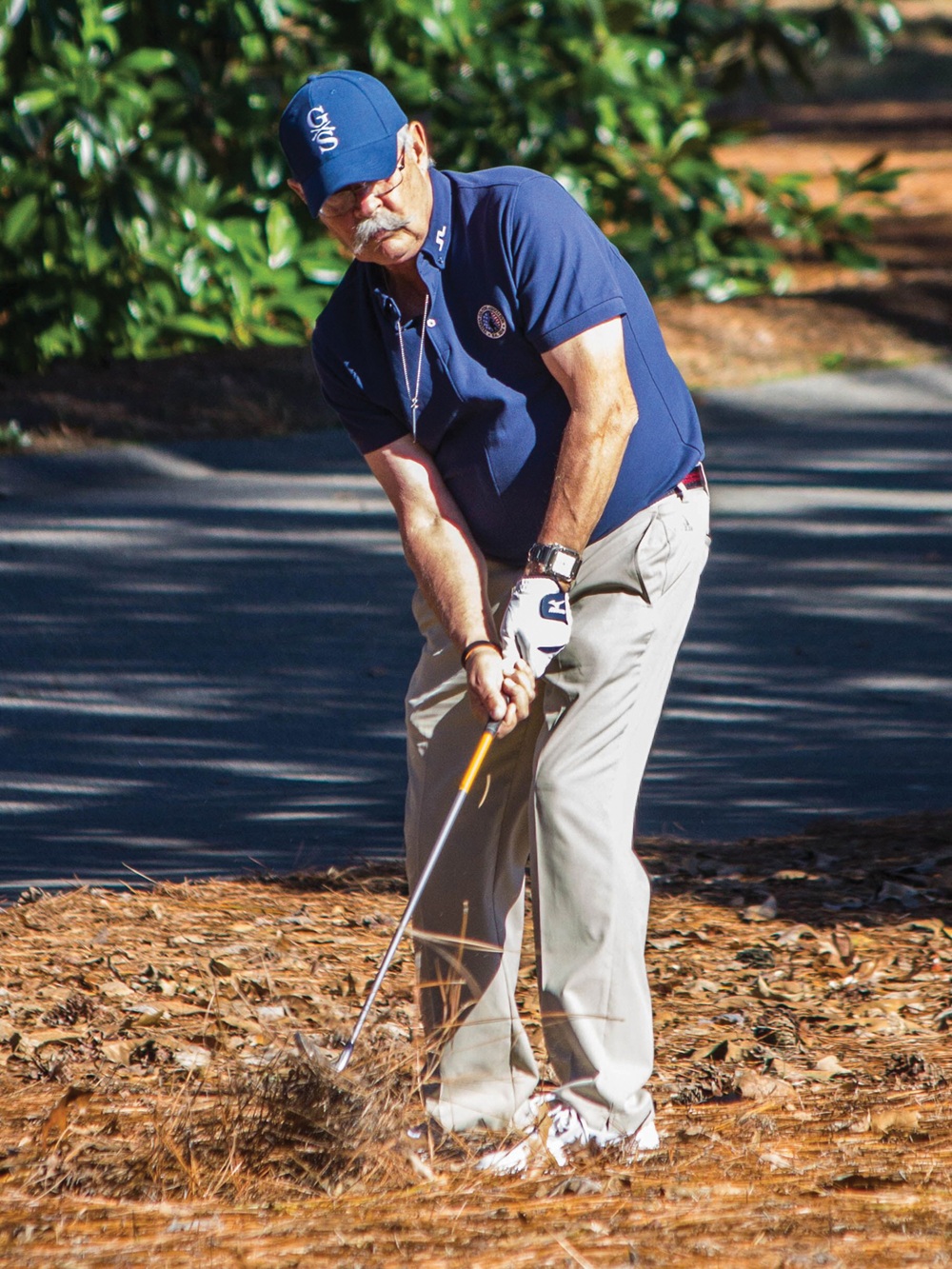GolfStatus is incredibly proud to work with golf tournaments and organizations that serve our country’s veterans. These extraordinary men and women have served with honor, bravery, and resilience. On this Veterans Day, GolfStatus thanks all those who have worn the uniform of our armed forces for their heroic sacrifices, and recognizes the service of two of our own, Account Manager Ken Boatman and Client Success Director Cash Dinkel.
Ken Boatman joined the U.S. Army in November of 1985, looking for a sense of purpose and structure in his life and seeking to take advantage of the Army’s educational benefits. He was commissioned as an officer in 1988 and was hired full-time with the Nebraska Army National Guard in 2000.
He vividly remembers the events of September 11, 2001. After watching in horror on television as the planes hit the Twin Towers, Ken recalls everyone at the Nebraska Army National Guard headquarters springing into action—locking down buildings, closing the gates, and checking in with armories around the state that were in their command. “We knew our lives in the military were going to change after that, and it most certainly did.” Less than a month later, Ken says his team was prepping units from the Nebraska Army National Guard to deploy.
Ken Boatman during his tour in Afghanistan
Ken served one tour in Afghanistan for 10 months, with two months of pre-deployment training at Fort Riley, Kansas. He recalls being part of a four-vehicle convoy traveling from Kabul through the dangerous town of Pole-e Alam his second week in country, when the convoy came under gunfire. “That was the scariest time in my military service,” he says. “Luckily no one on our team was hit, but I thought to myself, ‘this is going to be a long nine months.’” He later served a nine-month deployment at Guantanamo Bay in 2017.
Throughout his military service, Ken was an Infantry, Armor, and Logistics officer, achieving the rank of Major. He retired in June 2018 with over 32 years of service, with 23 years of full-time service. He came to GolfStatus in 2021.
Cash Dinkel served in the Nebraska Army National Guard from 2012 through 2020. With a young daughter and family to provide for, the value of military service and its educational and long-term veterans benefits were appealing to Cash, so he enlisted. After basic training, Cash was able to go to school full-time while serving in the National Guard.
Cash Dinkel, Nebraska Army National Guard
Cash was an 88M - Motor Transport Operator as part of the Army’s transportation logistics team, where he helped safely transport cargo, troops, and provide advanced mobility. Over his eight years in the Guard, he earned a Sharpshooter Badge along with the Army Badge for Physical Fitness. Cash was also awarded an Army Service Ribbon and National Defense Service Medal.
Though he was never deployed, Cash was part of preparing teams for deployment and trained for a variety of possible missions. “Getting trained on how to shoot the MK 19 grenade launcher was really cool,” Cash says. “It’s a piece of equipment that supports troops in a variety of ways, so we were ready to go if ever called into action.”
During his time in the National Guard, Cash earned a PGA Golf Management degree from the University of Nebraska-Lincoln and worked at several golf courses before coming to GolfStatus after he was discharged in 2020.
veterans’ organizations
GolfStatus is proud to work with these, and many other organizations, as they help veterans and their families in a variety of ways, including taking care of their mental and physical health, building bonds with other veterans with shared experiences, and navigating the complexities of post-military life. Learn more about how these organizations are serving those who served our country:
You can find a charity golf tournament powered by GolfStatus in your area that benefits veterans' causes. Browse events by date, location, and register today!




























